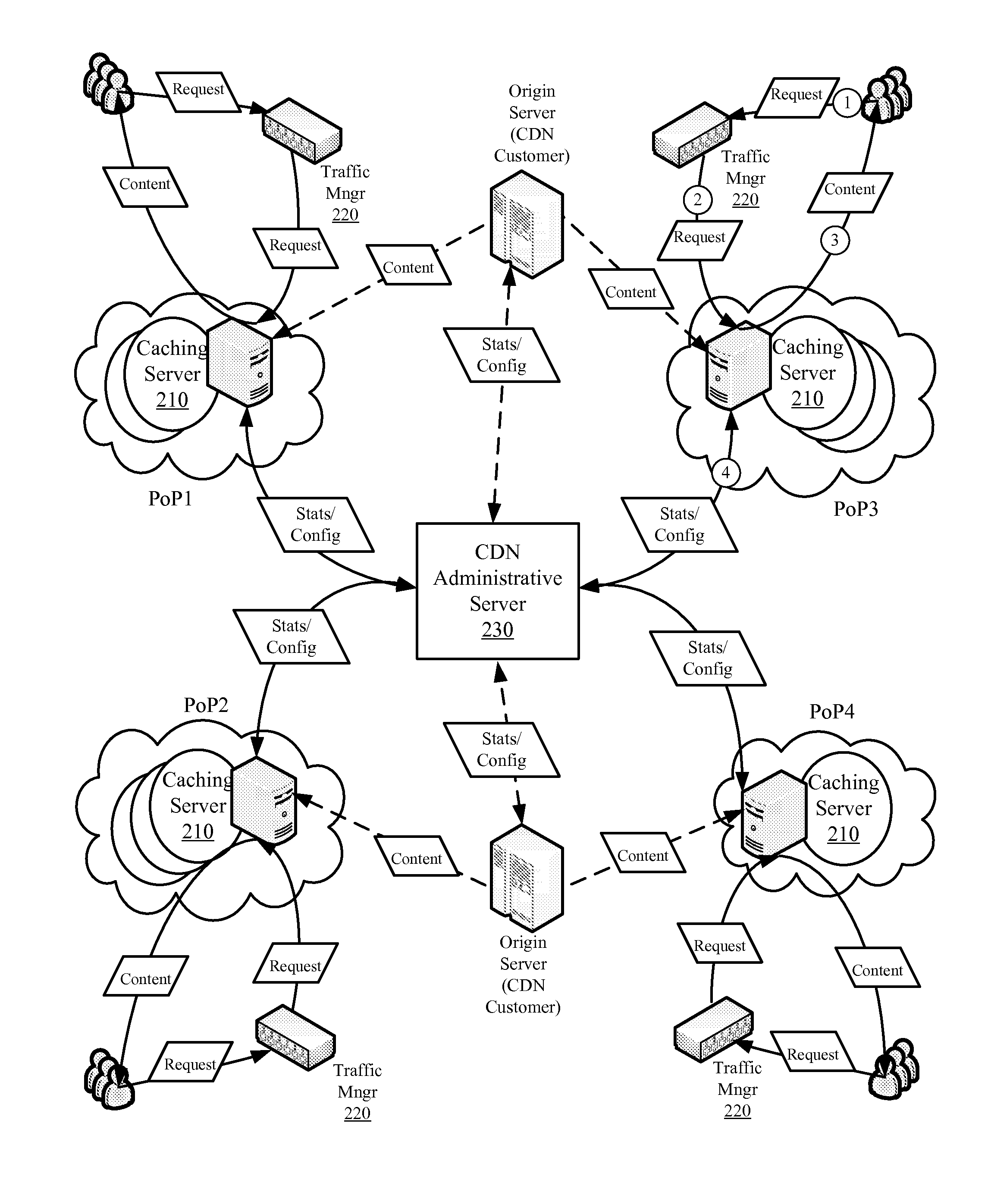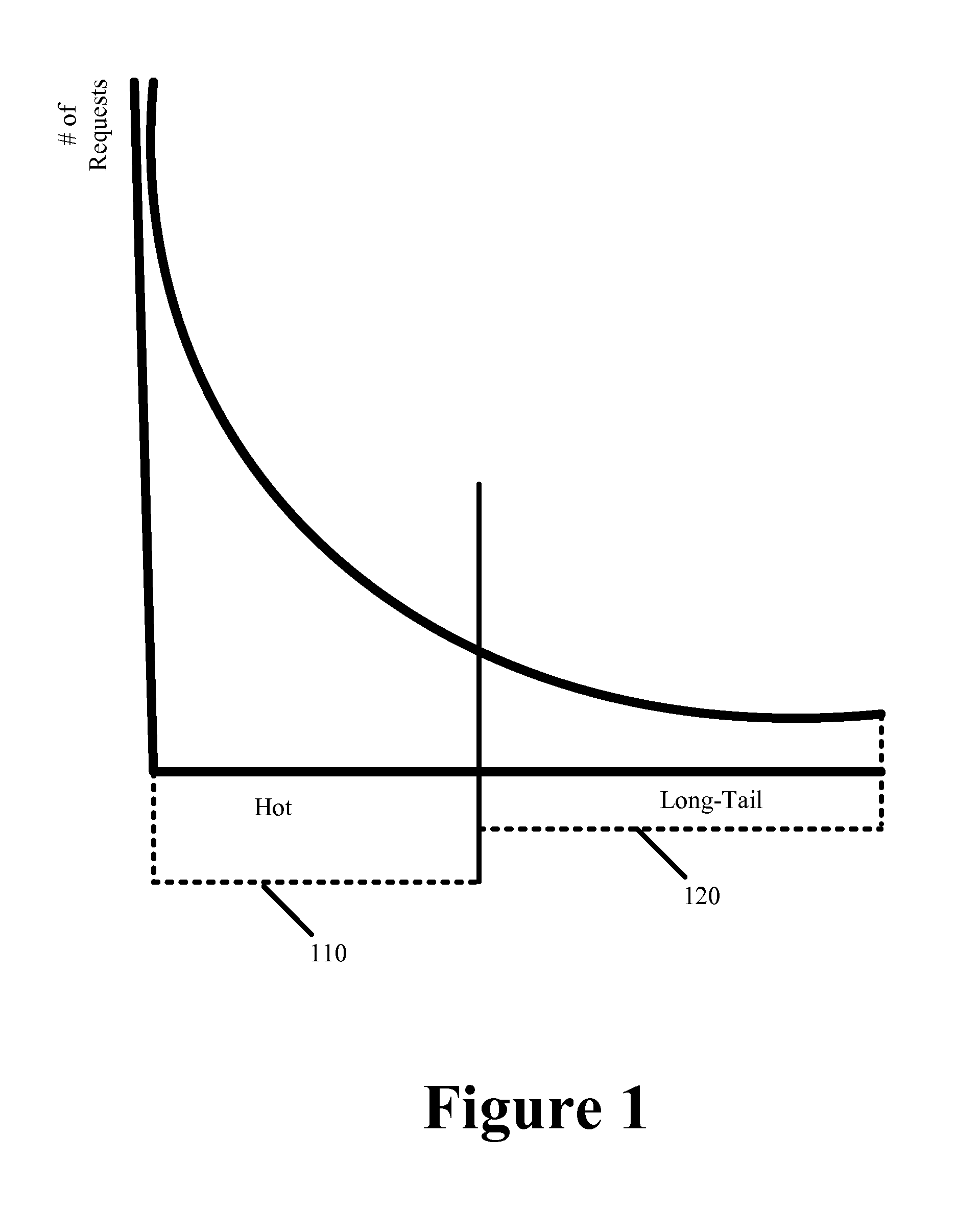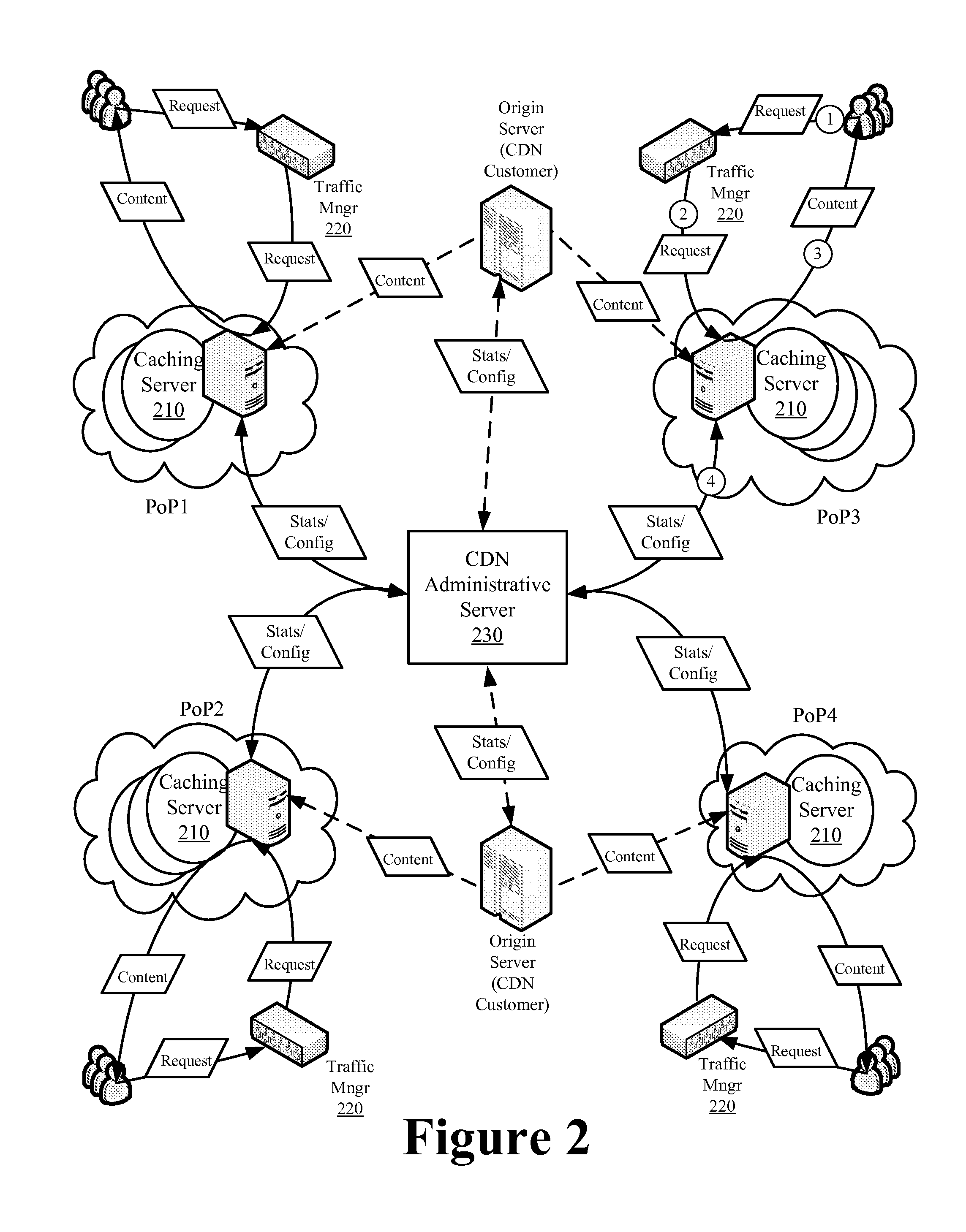Multi-Layer Multi-Hit Caching for Long Tail Content
a content and multi-layer technology, applied in the field of content caching, can solve the problems of less uptime for the caching server, increased failure risk of the storage medium decreased performance of the caching server, so as to minimize the effect of long-tail content on cache performance, optimize multi-hit caching, and retain much of the efficiency
- Summary
- Abstract
- Description
- Claims
- Application Information
AI Technical Summary
Benefits of technology
Problems solved by technology
Method used
Image
Examples
Embodiment Construction
[0051]In the following detailed description, numerous details, examples, and embodiments for systems and methods for optimized multi-hit caching are set forth and described. As one skilled in the art would understand in light of the present description, these systems and methods are not limited to the embodiments set forth, and these systems and methods may be practiced without some of the specific details and examples discussed. Also, reference is made to the accompanying figures, which illustrate specific embodiments in which the systems and methods can be practiced. It is to be understood that other embodiments can be used and structural changes can be made without departing from the scope of the embodiments herein described.
[0052]To aid in the discussion below, an overview for a distributed environment in which multi-hit caching is to be performed is presented in FIG. 2. FIG. 2 presents an exemplary CDN infrastructure that includes a distributed set of caching servers 210, traff...
PUM
 Login to View More
Login to View More Abstract
Description
Claims
Application Information
 Login to View More
Login to View More - R&D
- Intellectual Property
- Life Sciences
- Materials
- Tech Scout
- Unparalleled Data Quality
- Higher Quality Content
- 60% Fewer Hallucinations
Browse by: Latest US Patents, China's latest patents, Technical Efficacy Thesaurus, Application Domain, Technology Topic, Popular Technical Reports.
© 2025 PatSnap. All rights reserved.Legal|Privacy policy|Modern Slavery Act Transparency Statement|Sitemap|About US| Contact US: help@patsnap.com



